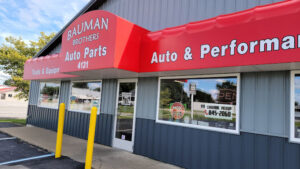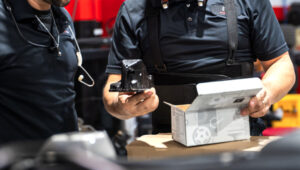What does the data access law say and what does the aftermarket need in order to compete with the alliance between OEMs and dealerships?
The legal battle over Right to Repair is focused on the Massachusetts Data Access Law requiring OEMs to open telematics data to vehicle owners and independent shops. Even if the law withstands legal challenges, will it be enough for non-dealer shops to compete with the alliance between OEMs and dealerships?
Where we are today
Telematics create greater customer affinity between service centers and customers by enabling more efficient methods to diagnose, service and repair vehicles. To date, OEMs have restricted third-party access to diagnostic data originating from their embedded telematics systems. This policy benefits OEMs, their affiliated dealerships and supplier networks, but it disadvantages independent shops and limits consumer choice.

Furthermore, most OEMs require owners to renew telematics subscriptions typically 2-3 years after the initial car purchase. Estimates vary, but only 10-25% of vehicle owners re-subscribe to their OEM service. Aftermarket telematics can provide a less expensive and viable alternative to owners and their service providers.
A Massachusetts ballot measure passed in 2020 requires OEMs to make telematics diagnostic data available to vehicle owners and independent shops. The Data Access Law was challenged by The Alliance for Automotive Innovation in federal court and awaits a judge’s ruling (which has been pending for over a year). As the decision will certainly be appealed, final resolution on the regulation is likely years away. Additional states are also considering similar ballot initiatives which could further complicate efforts for a non-legislative, industry wide agreement.
What does the Data Access Law say?
- OEMs are required to give independent shops access to data “in the same form and manner and to the same extent as is made available to dealers utilizing such diagnostic and repair information system.”
- OEMs should also provide a mobile app that allows vehicle owners to authorize a shop to access their telematics data to remotely maintain, diagnose and repair the motor vehicle.
- In return, OEMs will be able to charge both vehicle owners and shops for access to vehicle data using pricing based on “fair and reasonable terms.”
- However, the law only requires OEMs to share telematics data for passenger vehicles built 2022 or later.
What does the aftermarket need?
First of all, wide coverage — independent shops need a comprehensive and flexible solution. As the average age of US vehicles now exceeds 12 years, independent shops will require telematics that provide data from older vehicles.
Secondly, broad data integration — shops need to be able to ingest diagnostic data into their ERP level systems such as SMS and CRM applications. OEM data feeds might connect to proprietary dealer management systems but do not support integration with standard shop management systems. Further, having separate portals for each OEM will be unmanageable for shops servicing vehicles from a variety of manufacturers.
Finally, fair pricing — the “fair and reasonable” standard sounds helpful but is vague, open to interpretation and has weak enforcement provisions. Under the original Right to Repair arrangement, similar pricing guidelines were accepted by OEMs for licensing data to aftermarket scan tool manufacturers. As a result, some OEMs charge a nominal fee while others charge tens of thousands of dollars per model/year. Greater competition will lead to more efficient pricing, and aftermarket solutions can help shops and consumers from being captured by expensive OEM telematics subscriptions.
Conclusion
Independent shops need a platform that can manage data from a variety of third-party telematics devices as well as OEM systems. To meet the requirements of shops and vehicle owners alike, such aftermarket devices should provide options for consumer facing features, integration with popular fleet applications and support scan tool level, streaming diagnostics while remaining connected to the vehicle. The data made available to shops should be equally accessible to vehicle owners. This platform should also provide shops a fleet level overview to manage connections with customer vehicles and for the data to be posted to shops’ SMS, CRM and other essential information systems.
Peter Yorke is CEO and co-founder of VOYO.io, which has launched VOYOLink in partnership with Mitchell1 to provide telematics data to independent repair shops from fleets and consumer vehicles.










Comments are closed.